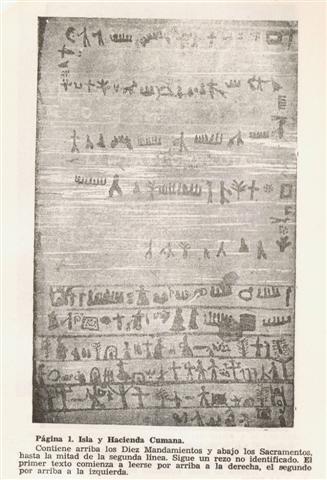|
INVERTED TEXT LINES 1. Invariably the text lines change direction where one text line ends and the next continues. The text can be read from left to right only if the tablet is turned around. This method of writing (boustrophedon) was used in ancient times in different places all over the world when writing on wooden staffs. Then it is natural to continue the text at the end of the staff, not by jumping to the other end but by twisting the staff a little bit instead. It is easier for the reader to know where to continue.
2. However, the rongorongo text lines not only change direction but the signs change orientation to upside down. When the text flow changes direction beyond the end of a line the text becomes inverted. This is highly unusual. Only one other example of 'inverted boustrophedon' has been noted, viz. that found on a stone tablet from the Andes. Dick Edgar Ibarra Grasso, La Escritura Indígena Andina:
But I think we should also consider the example of the old Ogham inscriptions: "The more ancient examples are standing stones, where the script was carved into the edge (droim or faobhar) of the stone, which formed the stemline against which individual characters are cut. The text of these 'Orthodox Ogham' inscriptions is read beginning from the bottom left-hand side of a stone, continuing upward along the edge, across the top and down the right-hand side (in the case of long inscriptions)." (Wikipedia) It is not a case of working hard on a flat field with an iron plough drawn by oxen (boûs), it is a case of a far loftier and older stone age vision, to follow the rise and descent of the stars above. Down in the west they go and then they must continue upside down under the earth until they rise again in the east. |
